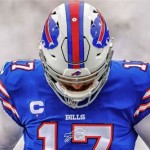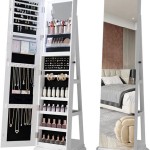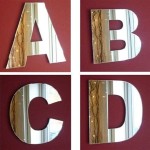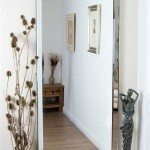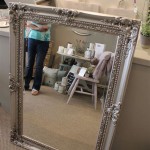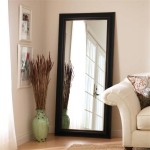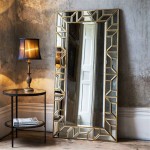Cheval Swivel Mirror Hardware: A Comprehensive Overview
Cheval swivel mirror hardware encompasses the various components required to construct and operate a freestanding, full-length mirror known as a cheval mirror. These mirrors, characterized by their ability to rotate or swivel within a supporting frame, provide users with a dynamic viewing experience, allowing them to adjust the mirror angle for optimal reflection. Understanding the hardware involved is crucial for both those constructing cheval mirrors from scratch and those seeking to repair or restore existing models.
The hardware components are not simply functional; they also significantly contribute to the overall aesthetic of the mirror. The finish, style, and quality of the hardware can either complement or detract from the mirror's design. Therefore, careful consideration should be given to the selection of appropriate hardware based on the intended style, budget, and level of craftsmanship.
The specific hardware requirements will vary depending on the design and size of the cheval mirror. However, certain components are considered standard and essential for the functionality of the mirror. This article will delve into the key elements of cheval swivel mirror hardware, exploring their function, materials, and considerations for selection.
Key Hardware Components: Pivots, Supports, and Fasteners
The core functionality of a cheval mirror, its ability to swivel, hinges on the pivot mechanism. This mechanism typically consists of two primary components: pivot pins or rods and pivot brackets or supports. The pivot pins or rods act as the axis around which the mirror frame rotates, while the pivot brackets or supports provide a secure and stable housing for the pins, attaching them to the mirror frame and the supporting structure.
Pivot materials frequently include brass, steel, or iron. Brass is a popular choice due to its resistance to corrosion and its ability to be polished to a high luster, contributing to an elegant aesthetic. Steel offers greater strength and durability, particularly important for larger and heavier mirrors. Iron, often used in antique reproductions, provides a rustic and traditional look, although it requires more diligent maintenance to prevent rust.
The design of the pivot brackets can vary significantly. Some are simple, minimalist designs, while others are more ornate and decorative. The choice will depend on the overall style of the mirror. It is essential that the brackets are adequately sized and positioned to ensure smooth and stable rotation without undue strain on the frame or the pivot pins. The brackets must be securely fastened to both the mirror frame and the base or upright supports using appropriate screws or bolts. The size and type of fastener will vary depending on the materials being joined and the weight of the mirror.
Fasteners also play a critical role in securing the entire cheval mirror structure. Screws, bolts, and occasionally even rivets are used to join the various components of the frame, the base, and the pivot hardware. The choice of fastener depends on the material being joined, the load-bearing requirements, and the desired aesthetic. For example, brass screws may be used to attach decorative elements, while steel bolts are preferred for structural connections that require high strength.
Furthermore, consideration must be given to the prevention of loosening. Lock washers, thread-locking compounds, or even peening the ends of bolts can be employed to ensure that the fasteners remain secure over time, preventing wobbling or instability in the mirror.
Hardware Finishes and Aesthetic Considerations
The finish of the cheval swivel mirror hardware is crucial to the overall aesthetic appeal of the piece. The hardware should complement the mirror frame, the base, and the surrounding décor. Common finishes include polished brass, antique brass, chrome, nickel, bronze, and painted finishes.
Polished brass offers a classic and elegant look, often associated with traditional or formal settings. It provides a warm, reflective surface that can enhance the light and ambiance of the room. Antique brass provides a more aged and rustic appearance, suitable for vintage or farmhouse-style interiors. Chrome and nickel offer a more modern and contemporary look, with a sleek and reflective surface that works well with minimalist designs.
Bronze finishes, ranging from oil-rubbed bronze to Venetian bronze, offer a warm and earthy tone, often used in Craftsman or Mission-style interiors. Painted finishes provide the greatest flexibility in terms of color and texture, allowing for seamless integration with the mirror frame. However, painted finishes may be less durable than metal finishes and require periodic touch-ups.
The choice of finish should also take into account the maintenance requirements. Polished brass and chrome require regular cleaning to maintain their luster, while antique brass and bronze finishes are more forgiving and require less frequent maintenance. Painted finishes can be easily cleaned with a damp cloth, but are susceptible to scratches and chips.
Beyond the finish, the style of the hardware itself is important. The shape and detailing of the pivot brackets, the design of the screws and bolts, and the overall form of the supporting structure should be carefully considered to ensure that they complement the overall design of the mirror. Ornate brackets with decorative embellishments may be suitable for a Victorian-style mirror, while simple, minimalist brackets are more appropriate for a contemporary design.
Factors Influencing Hardware Selection: Material, Weight, and Functionality
Several factors should influence the selection of cheval swivel mirror hardware, primarily focusing on the material of the mirror frame, the weight of the mirror, and the desired functionality. The material of the mirror frame will dictate the type of fasteners that can be used and the overall structural integrity of the assembly. For example, a solid wood frame can support heavier hardware and more robust fasteners, while a lighter frame made of particleboard or MDF may require lighter-duty hardware and more careful installation.
The weight of the mirror is a critical factor. Heavier mirrors require stronger pivot hardware and a more robust support structure. The pivot pins should be made of a high-strength material, such as steel, and the pivot brackets should be adequately sized to distribute the weight evenly. The base or upright supports must also be sufficiently sturdy to prevent the mirror from tipping over. The stability of the entire structure is paramount, especially if the mirror is to be placed in a high-traffic area or in a home with children or pets.
Functionality also plays a significant role in hardware selection. The desired range of swivel motion, the ease of adjustability, and the overall smoothness of operation should be considered. Some cheval mirrors are designed to swivel a full 360 degrees, while others are limited to a smaller range of motion. The pivot mechanism should be designed to allow for smooth and effortless adjustment without requiring excessive force. The hardware should also be designed to prevent the mirror from wobbling or shaking during use, ensuring a stable and clear reflection.
Furthermore, ease of assembly and maintenance should be considered. Hardware that is easy to install and adjust will save time and effort during the initial construction or repair of the mirror. Hardware that is easy to maintain will ensure that the mirror continues to function properly and look its best for years to come. This may involve selecting hardware with durable finishes that are resistant to corrosion and wear, or choosing hardware that can be easily disassembled for cleaning or repair.
Finally, safety is a paramount consideration. All hardware should be inspected for sharp edges or potential hazards that could cause injury. The pivot mechanism should be designed to prevent the mirror from suddenly collapsing or falling over. The base or upright supports should be stable and secure, preventing the mirror from tipping over. By carefully considering these factors, it is possible to select cheval swivel mirror hardware that is both functional and aesthetically pleasing, ensuring that the mirror provides years of reliable service.

Polished Brass Cheval Mirror S Paxton Hardware

Steel Mirror Swivels Paxton Hardware

Cheval Mirror Mounting Hinges Restoration Supplies

Antique Brass Steel Cheval Mirror Mount Set Kit Vintage Art Fancy Re Picture

Flat Black Steel Cheval Mirror Mount Set Modern Contemporary Kit Swing Tilt

Mirror Mounting Hardware Restoration Supplies

Cheval Mirror Mount Set Antique Hinges Friction Hinge Solid Brass Hardware

Solid Brass Cheval Mirror Mounting Hinges House Of Antique Hardware

Mirror Mounting Hardware Restoration Supplies

Cheval Mirror Bra Kon Movements Swivel Brakon Bracket Hinge Dressing Table Brass

